Understanding the Flight Mechanism of Stink Bugs
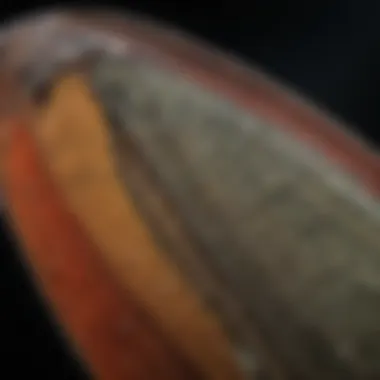
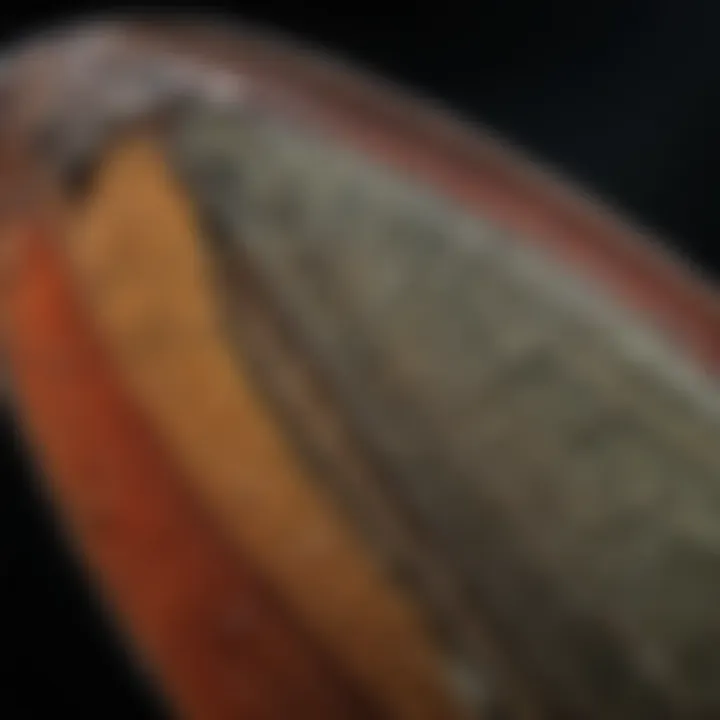
Intro
Stink bugs are intriguing creatures, often overlooked or dismissed as simple pests. Yet, their remarkable ability to fly plays a crucial role in their survival and interaction within their ecosystems. Understanding how stink bugs navigate their environments can provide valuable insights for homeowners dealing with infestations. This guide is designed to unpack the various aspects of the flight mechanisms of stink bugs, from their anatomy to their behavior, and how these factors contribute to their overall impact on agriculture and home spaces.
Understanding Pests
Definition of Pests
A pest is typically defined as any organism that is considered harmful to humans, their interests, or the environment. This broad category includes insects, weeds, and other species that damage crops, spread diseases, or disrupt recreational areas. Stink bugs, for instance, are classified as pests due to their propensity to feed on and damage agricultural crops such as tomatoes, corn, and soybeans.
Importance of Pest Identification
Recognizing a stink bug infestations promptly is essential for effective management. There are several species, and their behaviors and threat levels can vary significantly. Identifying which species are present can help in choosing the most appropriate control methods. Key features to look for include their distinct shield-like shape and green or brown coloration. Knowing the specific type can also illuminate their flying patterns, which influence their habits of invading homes.
Prevention Techniques
Home and Garden Preventative Measures
Proactive measures can significantly reduce the chances of stink bugs invading your home or garden. Here are some vital strategies:
- Seal Entry Points: Check for gaps or cracks around windows, doors, and walls, and seal them.
- Use Screens: Install fine mesh screens on windows and vents to block their entry.
- Maintain Outdoor Spaces: Keep gardens well-maintained and minimize clutter where bugs can hide.
- Remove Attractants: Clear away weeds and debris, as smell and decay can attract stink bugs.
Seasonal Prevention Tips
Awareness of stink bug seasonal behavior can aid prevention. In early fall, they begin to look for shelter. Therefore, homeowners should focus on:
- Conducting regular inspections: Before the onset of colder weather, check common entry points thoroughly.
- Using natural repellents: Consider using essential oils or commercially available products designed to deter stink bugs prior to their peak season.
Eco-Friendly Pest Control Solutions
Overview of Sustainable Practices
Embracing sustainable pest management practices is increasingly vital for both agricultural and residential areas. These practices include:
- Biological Control: Introduce natural predators like birds or beneficial insects that can help manage stink bug populations.
- Cultural Practices: Adjust farming techniques, such as crop rotation and planting time, to disrupt the lifecycle of stink bugs.
Natural Remedies and Their Effectiveness
Many homeowners explore the effectiveness of natural remedies in dealing with stink bugs. Some common natural solutions include:
- Soap and Water: A mixture can incapacitate stink bugs on contact.
- Vinegar: A spray made from vinegar can also deter them. However, it’s wise to apply cautious methodology to avoid harm to beneficial insects.
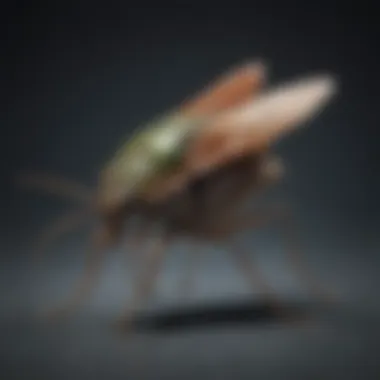

"A fundamental understanding of stink bugs and their behavior opens doors to effective management strategies for both gardens and homes."
Prolusion to Stink Bugs
Stink bugs represent a unique family of insects with intriguing attributes, especially regarding their flight capabilities. Understanding their mechanism of flight is critical for several reasons. Primarily, it helps house owners and agriculture enthusiasts comprehend how these insects interact with their environment. Knowing when and how stink bugs fly can inform better management practices, particularly for those interested in protecting their homes and gardens from potential damage. Additionally, the flight behavior sheds light on their ecological role, revealing how they contribute to ecosystems and agricultural health.
Current studies on their flight patterns also highlight the need for effective pest management strategies. As stink bugs expand their range, being aware of their movement can lead to proactive measures rather than reactive ones. This understanding not only benefits agricultural practices but also augments a homeowner's ability to safeguard their living spaces.
In this article, we will delve into key aspects including the anatomy that supports their flight, common species encountered, and the implications of their movement for the ecosystem. Understanding these components will provide a well-rounded viewpoint on stink bugs and their behaviors, aiming to eliminate misconceptions while fostering informed pest management strategies.
Understanding stink bug flight behavior is essential for anyone interested in maintaining healthy crops or a pest-free home.
Anatomy of Stink Bugs
The anatomy of stink bugs is a critical aspect that underpins their flight mechanisms and overall ecological roles. Understanding their physical structure provides insights into how these insects operate in their environments. This section will explore the various elements of their anatomy, which are essential for their ability to fly and survive. Each anatomical feature contributes to their flight capabilities and their adaptability in different situations.
Body Structure
Stink bugs have a characteristic body structure that greatly influences their flight performance. Their bodies are generally flattened, allowing them to navigate through various environments while minimizing air resistance. The exoskeleton is made of a tough material called chitin, offering protection while being lightweight enough to aid in movement and flying.
Key components of their body structure that impact flight include:
- Legs: Stink bugs possess six legs that are adapted for grasping surfaces. Their hind legs are particularly muscular, assisting in powerful jumps, which are often necessary for taking off the ground.
- Body Segments: The body is divided into three main sections: the head, thorax, and abdomen. Each part plays a role in the mechanics of flight. The thorax houses the muscles that operate the wings, making it crucial for strong flight capabilities.
- Sensory Organs: Stink bugs have compound eyes that allow for better vision, particularly in low light. Antennae help them detect environmental cues, which are essential for aligning themselves before flight.
This combined anatomy allows stink bugs to be effective flyers and agile in their movements. Without these structural adaptations, their ability to escape predators and search for habitat would be significantly compromised.
Wings and Flight Mechanism
The wings of stink bugs are one of the most critical components of their anatomy in terms of flight. They possess two pairs of wings, with the forewings being thickened and somewhat leathery, providing both protection and lift during flight. The back wings are more delicate and feather-like, enabling better maneuverability and control.
The mechanics of their flight can be described as follows:
- Wing Movement: Stink bugs flap their wings in a coordinated manner, which generates lift. The downstroke of the wings creates upward force, while the upstroke helps in moving forward.
- Wing Structure: The rigidity of the forewings provides stability during flight while the flexibility of the hind wings allows for rapid adjustments in flight trajectory. This combination is especially useful when dodging obstacles in their environment.
- Takeoff and Landing: To take off, stink bugs often rely on a combination of jumps and wing flapping. This behavior allows them to generate the necessary height before transitioning into sustained flight. Similarly, landing requires skillful control of their wings to descend gently and balance on surfaces.
"The flight mechanism of stink bugs illustrates the intricate connection between anatomy and behavior in insects. Understanding these details is crucial for a comprehensive view of their role in ecosystems."
In summary, the anatomy of stink bugs clearly shows how their body structure and wing design work together to facilitate flight. This understanding not only contributes to academic knowledge but also provides practical insight for managing their presence in agricultural and residential environments. Their adaptability in flying not only plays a role in their survival but also in their ecological interactions.
Flight Behavior of Stink Bugs
Understanding the flight behavior of stink bugs is crucial for several reasons. Firstly, it offers insights into their adaptability and survival strategies in various environments. This knowledge is particularly beneficial for homeowners and agricultural stakeholders who seek to manage or control these insects effectively. The ability of stink bugs to navigate and populate different areas directly impacts their role as pests. Therefore, recognizing their flight patterns can aid in developing better pest management techniques and mitigate their negative effects on crops and homes.
How Stink Bugs Take Flight
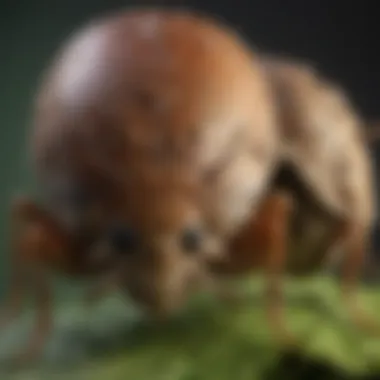

Stink bugs initiate flight by using a series of muscular contractions in their abdomen and thorax. This action allows them to extend their wings and achieve lift. The thorax contains powerful muscles that control wing movement. As they prepare for takeoff, stink bugs often rely on visual and physical cues from their environment. Successful flight begins with a strong push against the ground, followed by the rapid flapping of their wings. This process is crucial in determining their distance and direction during flight.
Interestingly, stink bugs do not solely depend on their wings to gain altitude. They can also use thermal currents, which are rising columns of warm air, to rise higher in the atmosphere. This strategy enables them to travel long distances efficiently without expending excessive energy. The coordination between wing movement and environmental factors is essential for their effective takeoff and navigation.
Factors Influencing Their Flight
Several elements influence the flight of stink bugs. These factors include:
- Environmental Conditions: Temperature and humidity play a significant role in their flight behavior. Warmer temperatures can stimulate activity and encourage flight, while high humidity levels can deter it.
- Predator Presence: The threat of predators can influence flight patterns. Stink bugs may take off quickly when they sense danger, darting away to safety.
- Nutritional Status: A stink bug's energy reserves affect its flying ability. Well-fed individuals typically exhibit more vigorous flight, as they have more energy to sustain longer journeys.
- Population Density: In densely populated areas, competition for resources may prompt stink bugs to fly in search of new habitats. This dispersal mechanism is vital for species continuation.
In summary, the flight behavior of stink bugs encompasses multiple factors that contribute to their survival and ecological role. By understanding how these insects take flight and the various influences on their behavior, homeowners and farmers can adopt more informed strategies for management.
Ecological Role of Stink Bugs
Stink bugs play a crucial part in their ecosystem. Their presence influences both agricultural practices and the dynamics of various species in their environments. Understanding this role helps us appreciate their function beyond being mere pests.
Impact on Agriculture
Stink bugs, particularly species like the Brown Marmorated Stink Bug, can cause significant harm to crops. They feed on a wide range of fruits, vegetables, and ornamental plants. When they insert their needle-like mouthparts into plants, they extract sap, which can lead to direct damage and secondary infections, such as fungus or bacteria. This behavior can inflict economic losses on farmers and affect food supply.
On the other hand, stink bugs also serve as natural pest control agents. Certain species feed on pest insects, helping regulate populations of harmful insects. This dual role complicates their classification as purely beneficial or harmful. Understanding their impact requires careful consideration of both their potential to damage crops and their role in maintaining ecological balance.
Interaction with Other Species
Stink bugs engage in complex interactions with other organisms within their habitats. They are part of the food web, serving as prey for birds, reptiles, and other insects. Their presence can support the survival of various predators, which might help to control other pest populations.
Furthermore, stink bugs can act as indicators of environmental health. Changes in their population dynamics often reflect shifts in habitat quality or changes in agricultural practices. As a result, monitoring stink bug populations can provide insights into broader ecological changes. This aspect of their role highlights the importance of preserving their populations and habitats.
Understanding the ecological role of stink bugs is essential for effective pest management strategies, ensuring that ecological balance is maintained while protecting agricultural interests.
Stink Bugs and Pest Management
Stink bugs are often associated with agricultural challenges and home infestations. Understanding their flight mechanisms is crucial for effective pest management. Given their ability to fly, stink bugs can disperse rapidly and invade crops and homes alike. Thus, a strategic approach is necessary to manage their populations. The knowledge surrounding stink bug behavior can guide homeowners and farmers in implementing preventive measures while mitigating their impact on the environment and economy.
Challenges in Control
Controlling stink bugs poses several difficulties. Firstly, these insects have a broad reproductive capacity. A single female can lay up to 400 eggs in her lifetime. This rapid population growth can quickly overwhelm efforts to manage them. Secondly, their ability to fly allows them to move easily from one location to another, making localized control strategies often ineffective.
Another challenge is the stink bug's knack for adaptation. They can find shelter in unexpected places, such as attics and walls, complicating extermination efforts. Furthermore, traditional pesticides often have limited efficacy against them due to their tough exoskeletons, which require higher concentrations to penetrate. This can lead to increased costs and environmental concerns related to chemical usage.
Considerations for homeowners also include the timing of treatments. Stink bugs are more active during warm months, which can make it essential to apply pest control measures at strategic times. Ignoring early infestations can result in a larger problem later, exacerbated by their flying capabilities that allow reinfestation.
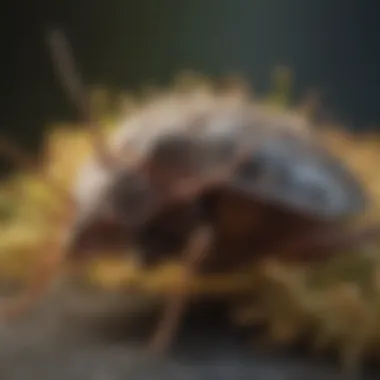
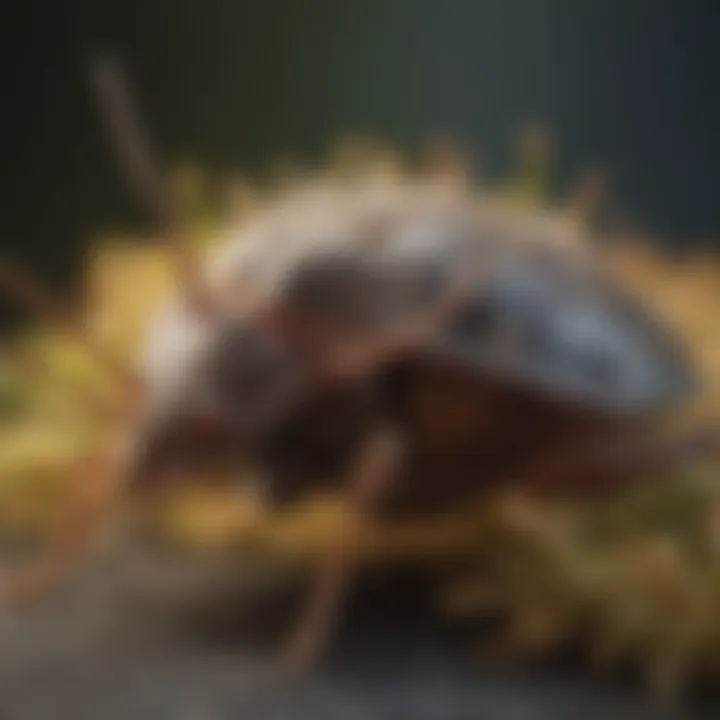
Strategies for Management
Managing stink bug populations requires a multifaceted approach. Here are effective strategies for control:
- Monitoring: Regularly inspect both indoor and outdoor areas for stink bugs, especially in late summer to early fall when they search for overwintering sites.
- Exclusion: Seal any potential entry points in your home. This includes cracks around windows, doors, and siding. Physical barriers can prevent them from entering.
- Cultural Practices: Crop rotation and timely planting of crops can minimize stink bug populations in agricultural settings. Growers can also plant trap crops that attract stink bugs to a specific area.
- Insecticidal Treatments: While traditional methods may not always work, targeted applications during peak activity periods can help manage populations effectively. Using insecticidal soaps and natural insecticides like neem oil can provide a safer option for the environment.
- Biological Control: Encourage natural predators, such as toads and certain types of birds, can help control stink bug numbers in your garden or farm.
Implementing these strategies can not only help mitigate the presence of stink bugs in your home and garden but also offer a sustainable method for longer-term management. By understanding their behavior and flight patterns, effective control measures can be established, reducing their impact on your surroundings.
"Knowledge is the first step toward effective pest management. Understanding how stink bugs operate can substantially reduce their populations in your area."
Frequently Asked Questions
The section on Frequently Asked Questions is crucial in this article. It addresses common queries and misconceptions that people may have regarding stink bugs and their flight capabilities. By incorporating this section, we provide valuable insights that can help housewives and homeowners understand these insects better. Additionally, it can aid in developing effective pest management strategies, thus fostering a more proactive approach to dealing with infestations.
Do Stink Bugs Only Fly?
One common question is whether stink bugs are solely dependent on flight for locomotion. The answer is no; stink bugs exhibit a range of movement techniques beyond flying. They can walk and sometimes jump short distances using their legs. However, flight is an essential aspect of their behavior.
Stink bugs fly primarily to escape predators, find food, and seek mates. When the weather is suitable, such as on warm sunny days, they are more likely to take to the air. It is interesting to note that their flight can be influenced by environmental factors, including temperature and humidity.
Stink bugs often use flight as a way to disperse in search of new habitats or food sources. This adaptation is significant for their survival and plays a vital role in their ecological interactions. Moreover, their capability to fly enhances their chances of finding mates, thus ensuring the continuation of their species.
How High Can Stink Bugs Fly?
Another prevalent inquiry is about the altitude at which stink bugs can fly. The height of their flight can vary depending on the species and environmental circumstances. In general, stink bugs can fly to heights of up to 300 feet. However, they typically do not fly at such high altitudes unless necessary.
Most stink bugs tend to remain closer to the ground, around 10 to 20 feet, as this area provides ample access to food and shelter. Factors such as wind and temperature also affect their flight altitude.
Understanding the flying capabilities of stink bugs is essential for homeowners. Knowing how high these insects can fly helps predict potential entry points into homes, especially during the cooler months when they seek warmth. This knowledge allows for better preventative measures to be put in place, hence minimizing the chances of infestations.
End
Second, recognizing the conditions that influence their flight provides insights into when these insects are more active. For example, temperature and humidity levels play a significant role in their behavior. Homeowners can thus prepare better for season changes, ensuring they have the proper measures in place to mitigate infestations.
Additionally, knowledge of stink bug flight patterns can improve agricultural practices. Farmers can adapt their management strategies to minimize damage to crops by understanding when these pests are likely to appear. This connection between stink bugs and agriculture highlights the ecological side of their behavior, where they are seen not just as nuisances but as part of larger environmental systems.
Summary of Key Points
- Stink bugs possess an impressive ability to fly, significantly impacting their pest behavior.
- Factors such as temperature and humidity can influence their flight activities.
- Recognizing their flight patterns can assist in pest management for homeowners.
- Farmers can benefit from understanding these insects to enhance crop protection strategies.
Future Research Directions
Future research on stink bugs might explore more about their flight dynamics.
Further studies can look into the following areas:
- Analyzing the impact of urban environments on stink bug flight behavior.
- Investigating how climate change may alter migration patterns of stink bugs, affecting both residential and agricultural settings.
- Evaluating potential natural predators of stink bugs and their influence on population control.
By evaluating these aspects, researchers can offer new insights that can improve pest management strategies even more, emphasizing the importance of continuing to study stink bugs and their ecological relationships.



